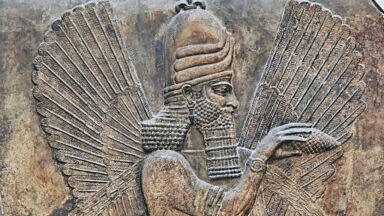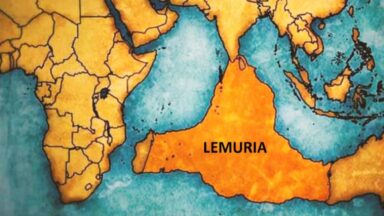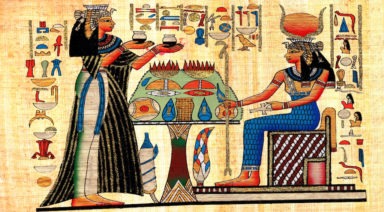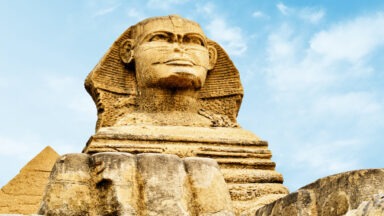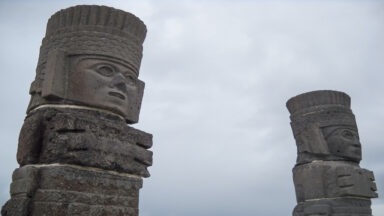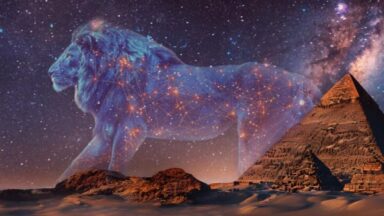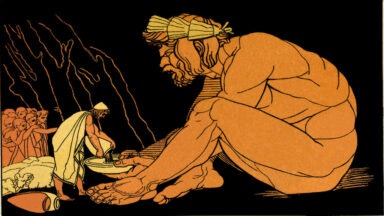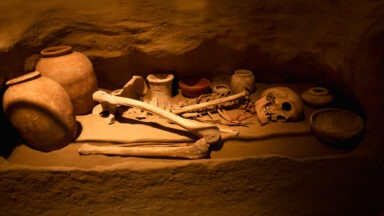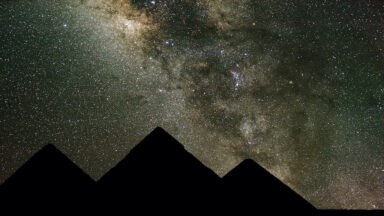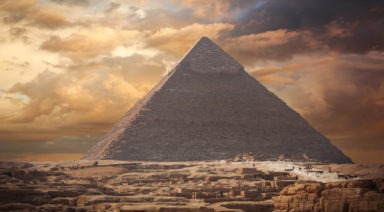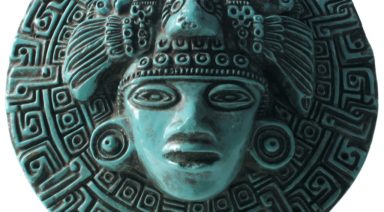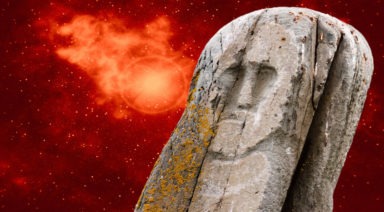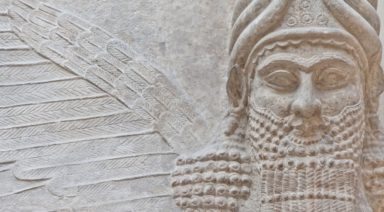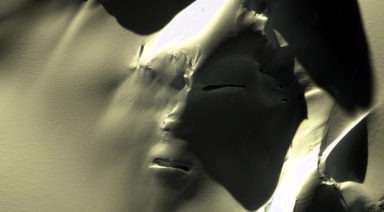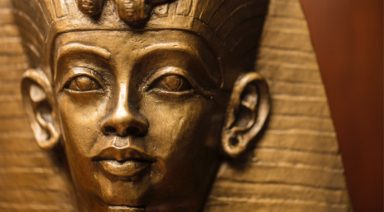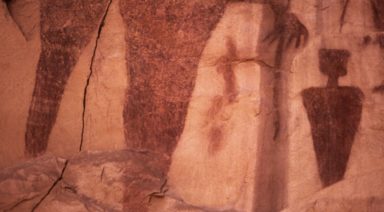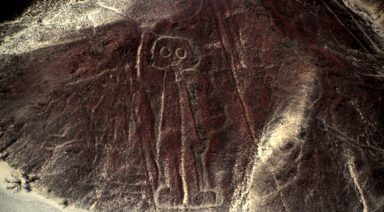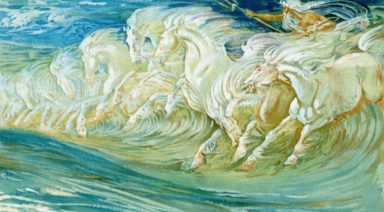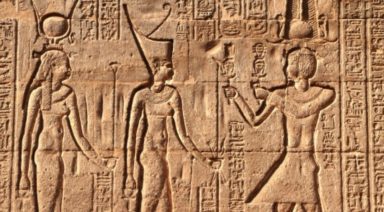Where Did Humans Originate, Earth or Outer Space?
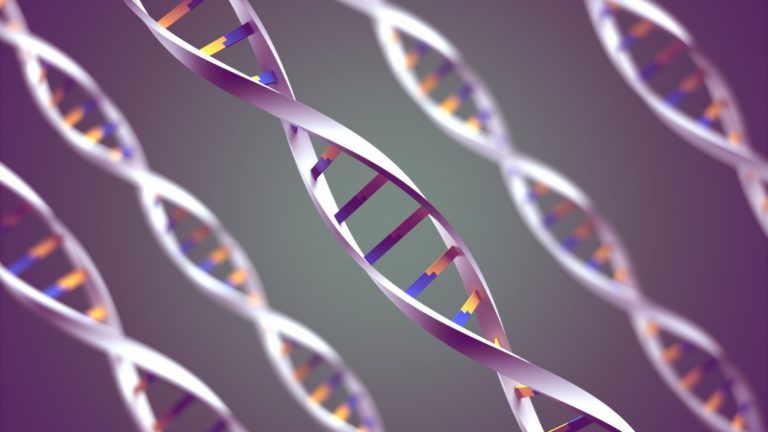
At over 4.5 billion years old and possibly much older, the Earth has been home to millions of unique and beautiful creatures. While it appears that modern humans are a relatively late entry into the marathon of blood-based, karmic rebirth cycles, there is a lot of speculation about when Homo sapiens emerged as the primary, two-legged leaders of Planet Earth. So where did humans come from?
“If then, said I, the question is put to me would I rather have a miserable ape for a grandfather or a man highly endowed by nature and possessed of great means of influence and yet who employs these faculties and that influence for the mere purpose of introducing ridicule into a grave scientific discussion, I unhesitatingly affirm my preference for the ape.”
— Thomas Henry Huxley
When and Where Did Humans First Appear on Earth?
According to recent findings, the original Hominids emerged (or arrived) on planet earth between 5 and 7 million years ago in Africa, when a handful of mature apes felt it was high time to begin walking upright.
As humans, we are members of the Hominidae, which includes great apes, gorillas, chimpanzees, and human beings. A Hominine is a member of the tribe Homininae, which includes gorillas, chimps, and humans. A Hominin is specific to the family Hominini, which excludes all the other Hominidae, except chimps and humans. Our ancient Hominid cousins, who evolved into Homo from the genus Australopithecus, may have appeared as late as 2-3 million years ago.
It wasn’t until around 200,000 years ago that modern humans took a cue from Homo Erectus, the “upright man,” and became the dominant Hominid species here on Earth. While their journeys began in Africa, these Hominins quickly moved toward Asia, Europe, Scandinavia, and eventually, the rest of the world.
Watch the full episode of Erich von Daniken’s Aliens of the Old Testament
What Did Modern Humans Evolve From?
According to Darwinian evolution, humans evolved through a long process that began with their ancient ancestors, the earliest primates. Most scientists believe that the genus Homo eventually extended itself to its offspring known as Homo sapiens, distinct from the great apes. This means that at one point, two unique ancestral lineages emerged, most likely from one genus, and initially, from one species.
How did this come to be? According to widely accepted beliefs, human beings and their language gradually evolved. With interbreeding among all the Hominins, trees of bipedal-beings emerged. Keep in mind that while all Hominins (modern humans) are Hominids, very few Hominids are Hominins.
Some of today’s religious fanatics believe that the Earth is much younger than 4.5 billion years and that no terrestrial (Earth-resident) rocks have been proven to be any older than a few hundred thousand years if that. All estimates, for man and planet, they say, stem from approximation, which is neither precise nor relevant. On a side note: while it appears Homo sapiens have come a long way, human consciousness and awareness are still works-in-progress.
Modern humans are unique because we conquered four primary evolutionary hurdles:
- Terrestrial living (on the ground) versus trees
- Changing physical movement from quadrupedal to bipedal
- Developing a large brain (encephalization)
- Forming tribes, cultures, and civilizations.
With all these abilities in tow, Home sapiens were able to claim their right to be masters over the dominion of Earth.
Did Humans Come From Other Planets?
Panspermia
This unique theory states that comets, rocks, meteorites, and other heavenly bodies, all speeding through space, transported bacteria and other DNA to Earth, and throughout all the galaxies and Universes throughout spacetime. Some say Mars is the likely location of Earth’s first infusion of life from other planets.
Alien Engineering
Long ago, possibly during the prehistoric eras, alien visitors traveled to Earth and educated a variety of our cultures on science, biology, infrastructure, and leadership to kickstart life for humanoids.
Some suggest these aliens are the same beings who became the mythic figureheads of a variety of our most popular religions.
Starseed Experiment
Many believe that humans came from other planets and Universes, and continue to do so, thereby seeding our planet with unique DNA from a variety of interplanetary species. Consider these possible types of alien visitors: Sirian, Pleiadian, Arturian, Andromedan, Starseed, Indigo, Crystal, Rainbow, Lightworker, Orion, Maldek, Lemurian, Atlantean, Avian, Reptilian, and others. Each of these has a unique origin and a variety of unique characteristics.
Miller-Urey Experiment
Since electric-sparks can turn water, methane, ammonia, and hydrogen into amino acids and sugars, it might be possible that life on Earth was initiated by bolts of lightning. Where this theory becomes otherworldly is when you consider that this may have been the first tactic used by living-beings from other worlds to bring life to Earth.
Deep-Sea Vents
It’s possible that deep-sea vents may have spewed enough hydrogen-rich molecules and mineral-catalysts to stimulate critical, pre-life reactions. Alien species may have had the forethought to utilize these vents to birth new life-forms from a distance.
Buried Under Ice-Caps
Some alien theorists believe that life on Earth began when several extraterrestrial alliances secretly deposited their offspring and other experiments in the deep waters under the Arctic and Antarctic caps. Since ice may have covered Earth’s oceans 3 billion years ago, aliens may have been living here for a long time.
Consciousness Transmutation
As other planets and galaxies began to intuit Earth’s potential, they utilized ancient techniques that allowed them to convert their forms of consciousness into forms that had the highest potential to inspire the birth of new living-beings here on Earth. Upon soul-travel to Earth, these conscious forms/souls merged with our soil, water, and air, and gave birth to new life forms – all through soul-intention.
Pre-19th Century Theories
Darwin’s theory
Charles Darwin and a handful of other naturalists and scientists postulated that, over time, the strongest and most aggressive species are the ones that tend to survive. As each generation of a species develops, it creates variations and enhancements that increase its ability to thrive, compete, defend itself, claim territory, and eventually reproduce. Darwin’s belief that organisms change over time as a result of inherited traits and behaviors has been a foundational belief system for over 100 years.
Thomas Henry Huxley
Thomas is a British biologist who became Charles Darwin’s (and natural selection’s) most ardent fan and defender. While he clearly adored Darwin, Huxley was also his own man. He did not believe in Darwin’s slow, gradual evolutionary process. Instead, he proposed that an evolving genus, species, or lineage could make miraculous and aggressive jumps within a generation.
Huxley was also one of the first scientists to discuss the evolution of Man, separate from animals, which was taboo at the time. He took this interest in man’s origin a step further and declared that the brains of apes and humans were fundamentally and anatomically the same. He was right. His children not only honored his legacy, but they also continued it.
Modern Theories
Aridity hypothesis, also known as the Savannah hypothesis
This unique and valid theory, which has developed over the past ten years, points to the unusual geology and climate of East Africa as being the driver of evolution. With alternating periods of dryness and hyper-humidity, Hominids appear to have had no choice but to evolve. As they endured and improvised around the drastic changes and extremes of African climates, they developed traits that led to a new, more evolved species. When reviewing the jumps in Hominid development during this period, all evidence appears to support the Aridity hypothesis.
Was Lucy the First Human?
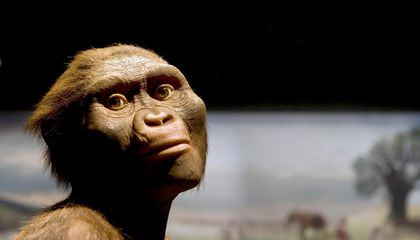
Discovered in 1974 in Ethiopia, by paleontologist Donald C. Johanson, Lucy is our most famous, ancient human cousin.
This 3.2-million-year-old ape was the first Homo skeleton ever found. Her lineage appears to be that of Australophithecus afarensis, the direct ancestor of modern man.
While Lucy is the most famous Hominid, her cousin “Ardi” (Ardipithecus ramidus), at 4.4-million-years-old, became the oldest when he was discovered in 1992. Ardi neither resembles a human or a chimpanzee, yet he is an ancestor to both. Ardi’s skeleton represents the oldest and most complete study of Hominids to date.
While Ardi and Lucy were celebrating, another Hominid, Sahelanthropus tchadensis, was discovered in Chad in 2002. At 7 million-years-old, Sahe now holds the crown as the oldest of the early Hominid species, all of which appear to represent one genus.
If our planet was terraformed and then injected with alien DNA as an ambitious experiment, it might be hard to prove. Given all the holes in each of the above theories, all of them may be at least partially true. One thing is certain; the Earth is regenerative.
Given how complex and sometimes fragile the Earth is, it’s quite remarkable that it continues to renew and restore itself. Its many species, cells, and ecosystems seem to be both flexible and durable. Even humans and our ancient ancestors were successful at regrouping, regenerating, adapting, and reemerging in new and inspiring forms. One thing is sure: planets, creatures, and bacteria will always find a way to survive.
The History of the Anunnaki, Creators of Humanity?
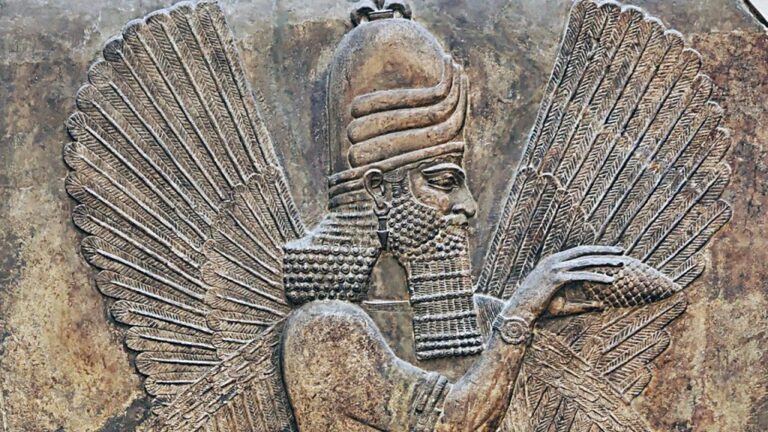
The Anunnaki are mentioned in ancient Sumerian texts as powerful deities who descended from the sky to influence human civilization. These beings not only guided the Sumerians in the development of their culture, but also participated in the creation and evolution of mankind. In this article we explore who the Anunnaki were, their characteristics, and how their presence has been interpreted in different historical and cultural contexts.
Table of Contents
- Who Are the Anunnaki?
- Characteristics of the Anunnaki According to Ancient Texts
- Origin and Meaning of the Term Anunnaki
- The Anunnaki and the Creation of the Human Being
- The Anunnaki in the Bible and Other Sacred Texts
- The Connection Between the Anunnaki and Atlantis
- Are the Anunnaki Still on Earth Today?
Who Are the Anunnaki?
The Anunnaki are a race of deities mentioned in Sumerian mythology, considered to be the sons of Anu, the sky god. These deities were revered for their power and wisdom, and were believed to rule the Earth and the underworld. The Sumerians recorded on their cuneiform tablets the existence of the Anunnaki and their intervention in human affairs, attributing to them the creation of civilization through the transmission of advanced knowledge in astronomy, agriculture, architecture and medicine.
The writer and researcher Zecharia Sitchin popularized the idea that the Anunnaki were extraterrestrial beings from the planet Nibiru. According to Sitchin, these gods arrived on Earth some 450,000 years ago and, through genetic engineering, created Homo sapiens by mixing their DNA with that of terrestrial primates. The main purpose of this intervention was to use humans as labor to extract gold and other natural resources.
In the series Ancient Civilizations, available on Gaia, these theories are explored through various archaeological evidence and ancient texts, offering fascinating insights into the influence of the Anunnaki on human history.
Characteristics of the Anunnaki According to Ancient Texts
Sumerian texts and other ancient traditions attribute to the Anunnaki a number of extraordinary characteristics that distinguish them from other mythological or historical beings. These descriptions allow us to better understand why they were considered figures of superior power and wisdom.
- Celestial origin: They were said to have descended from the sky, specifically from the planet Nibiru, whose elliptical orbit periodically connected them with the Earth.
- Advanced technology: They possessed superior technical knowledge in fields such as astronomy, medicine, engineering and architecture.
- Imposing appearance: They were described as tall beings, with defined features, long hair and beard, conveying authority and divinity.
- Extreme longevity: It was believed that they could live for thousands of years, which is reflected in the long reigns recorded in the Sumerian King List.
- Genetic capabilities: According to Sitchin, they mastered DNA manipulation and created human hybrids for specific tasks, such as mining.
- Role of rulers: They ruled cities and regions, establishing laws and rules that structured Sumerian social and political life.
- Lasting cultural influence: His teachings left deep traces in Mesopotamian culture, in religious practices, symbols and architectural structures.
Origin and Meaning of the Term “Anunnaki”
The term “Anunnaki” comes from Akkadian and translates as “those who descended from heaven”. In turn, it derives from the Sumerian Anunna, which means “the sons of Anu”, the supreme god of the sky in Mesopotamian cosmology. This name reflects the divine and celestial character of these beings, who were seen as intermediaries between the world of the gods and that of humans.
In Sumerian cuneiform tablets, the Anunnaki appear as figures with authority to establish order on Earth and in the underworld. Their constant presence in mythical accounts suggests that they were not simply local deities, but entities with a fundamental role in the creation, destiny and governance of the human and spiritual world.
The Anunnaki and the Creation of the Human Being
One of the most debated aspects of the Anunnaki is their participation in the creation of human beings. According to the theories proposed by Zecharia Sitchin, the Anunnaki would have arrived on Earth some 450,000 years ago with the objective of extracting gold to restore the atmosphere of their planet, Nibiru. To facilitate this task, they found it necessary to create a workforce adapted to the conditions of the planet.
According to this view, the Anunnaki used their knowledge of genetics to manipulate the DNA of primitive hominids and combine it with their own. The result would have been a new species: Homo sapiens. This hybrid being was not only capable of following orders and performing physical tasks, but also inherited some of the intelligence and technical skills of its creators.
In addition to creating a new life form, the Anunnaki would have guided its cultural development. They did not limit themselves to giving biological origin to human beings, but also sowed the first notions of social organization, spirituality and technology. This would explain, for some researchers, the rapid evolutionary and civilizational leap observed in the archaeological records of Mesopotamia.
-
Genetic Manipulation and Origin of Homo Sapiens
Genetic manipulation appears to be central to the theory of human creation by the Anunnaki. Sitchin posits that these beings had the ability to alter the genetic code with precision, a knowledge far beyond what ancient civilizations could have developed on their own. This act of biological engineering would have given rise to a species capable of reasoning, communicating and collaborating in complex activities.
This new being, the product of a fusion between extraterrestrial and terrestrial DNA, was designed with a functional purpose: to serve the Anunnaki in mining and other tasks. However, over time, this hybrid would have acquired self-awareness and developed capabilities beyond the control of its creators. This would have led to internal tensions among the Anunnaki themselves regarding the future of humanity.
-
Knowledge Transmitted to Ancient Civilizations
In addition to their biological intervention, Sumerian accounts indicate that the Anunnaki shared a wealth of knowledge with humans. This knowledge included astronomy, mathematics, architecture and agricultural practices that fueled the rise of the Mesopotamian civilization. Sumerian temples, ziggurats and irrigation systems are seen as evidence of this advanced legacy.
This transmission of knowledge was not random. The Anunnaki would have chosen specific human lineages to continue their teaching, giving rise to priestly castes and kings who ruled with “divine” authority. Through these intermediaries, the teachings of the Anunnaki were integrated into the social and spiritual structure of early human cultures, many of which continued to worship them as gods for centuries.
The Anunnaki in the Bible and Other Sacred Texts
Some researchers claim that the Anunnaki appear in the Bible under the name of the Nephilim. Genesis 6:4 describes these beings as the “sons of God” who united with the “daughters of men,” giving rise to a race of giants. This narrative bears similarities to Sumerian stories, where celestial gods interact and interbreed with humans, generating special lineages.
Other religious traditions also contain references to superior beings descending from heaven to guide or intervene in human affairs. Apocryphal texts such as the Book of Enoch expand on these descriptions, mentioning the “Watchers,” entities that taught mankind advanced knowledge. These coincidences have led some authors to propose that sacred figures in different cultures may have a common origin in the stories of the Anunnaki.
The Connection Between the Anunnaki and Atlantis
The alleged relationship between the Anunnaki and Atlantis stems from the idea that both represent highly advanced civilizations that existed in antiquity. Some theorists claim that the Anunnaki could have been the true founders of Atlantis, transmitting their technology and knowledge to the first Atlanteans. This hypothesis would explain the level of sophistication attributed to this mythical civilization.
When Atlantis was destroyed, according to Plato’s accounts, some survivors would have taken this knowledge with them to other parts of the world. This would have given rise to new cultures such as the Egyptian, Mesopotamian and Andean civilizations. From this perspective, the legacy of the Anunnaki did not end with Atlantis, but was dispersed throughout the planet through these migrations.
Are the Anunnaki Still on Earth Today?
The possibility that the Anunnaki are still present on Earth is an idea that has gained momentum among certain groups of researchers and enthusiasts. According to this theory, these beings never completely left the planet, but continued to operate from hidden planes or through human elites with whom they would be linked. Some even suggest that they influence global politics, economics and technological development.
However, there is no evidence to support these claims. Most scholars consider these ideas to be speculative. Even so, interest in the figure of the Anunnaki continues to grow, fueled by ancient texts, archaeological finds and the increasing exploration of alternative narratives about the origin of humanity.




